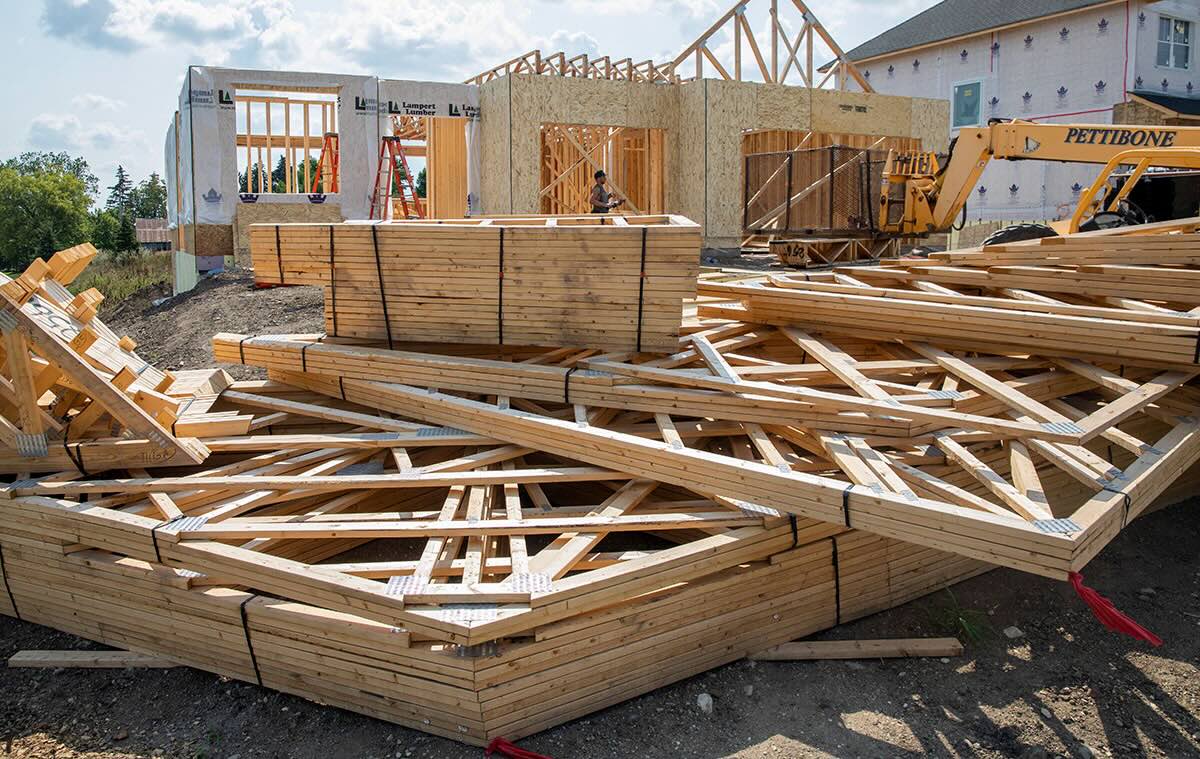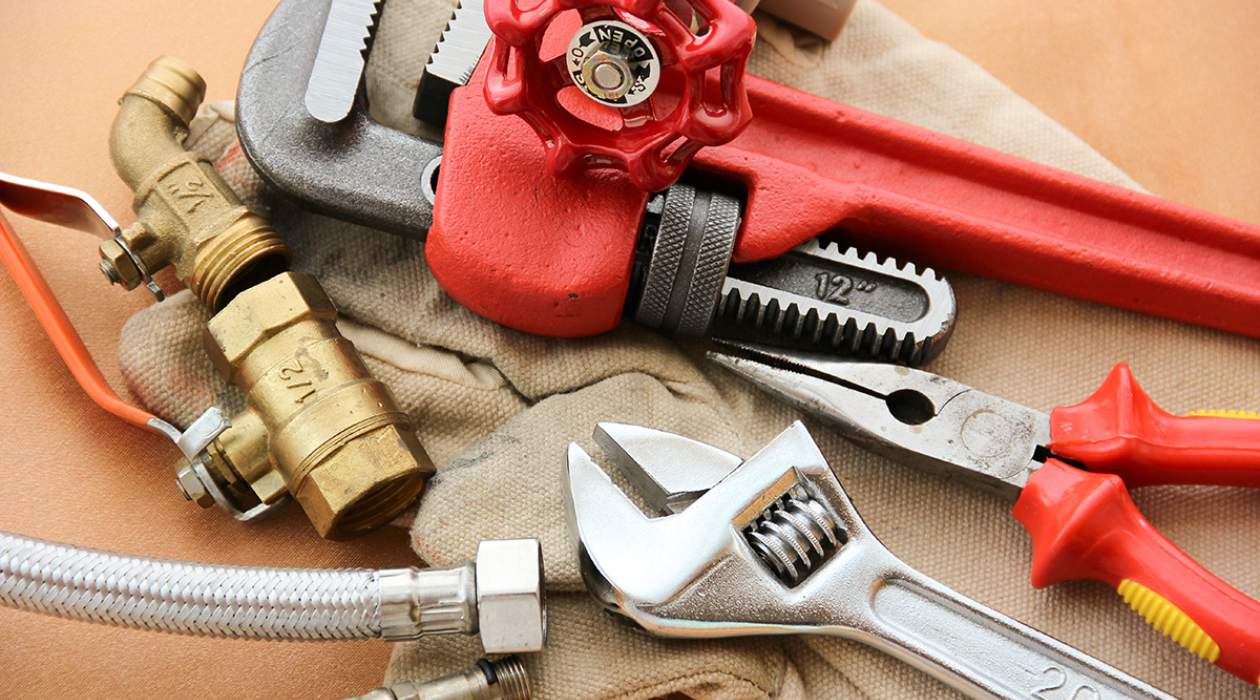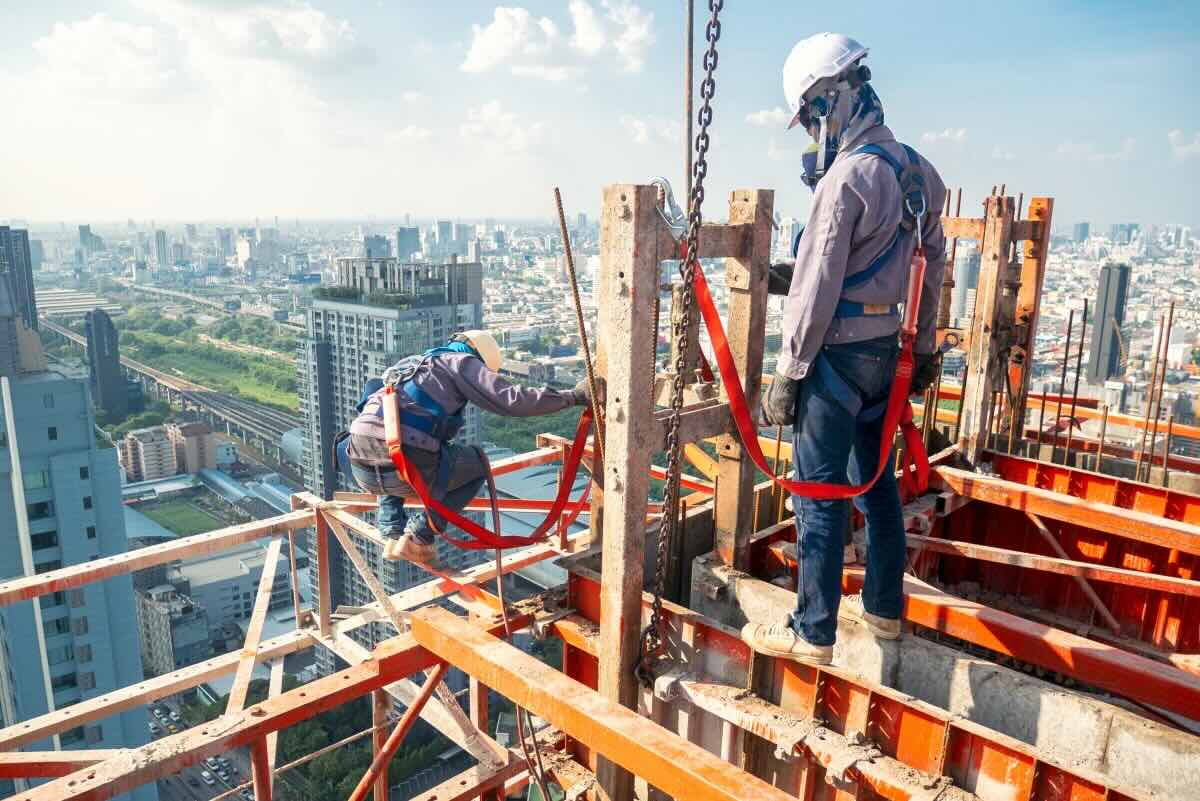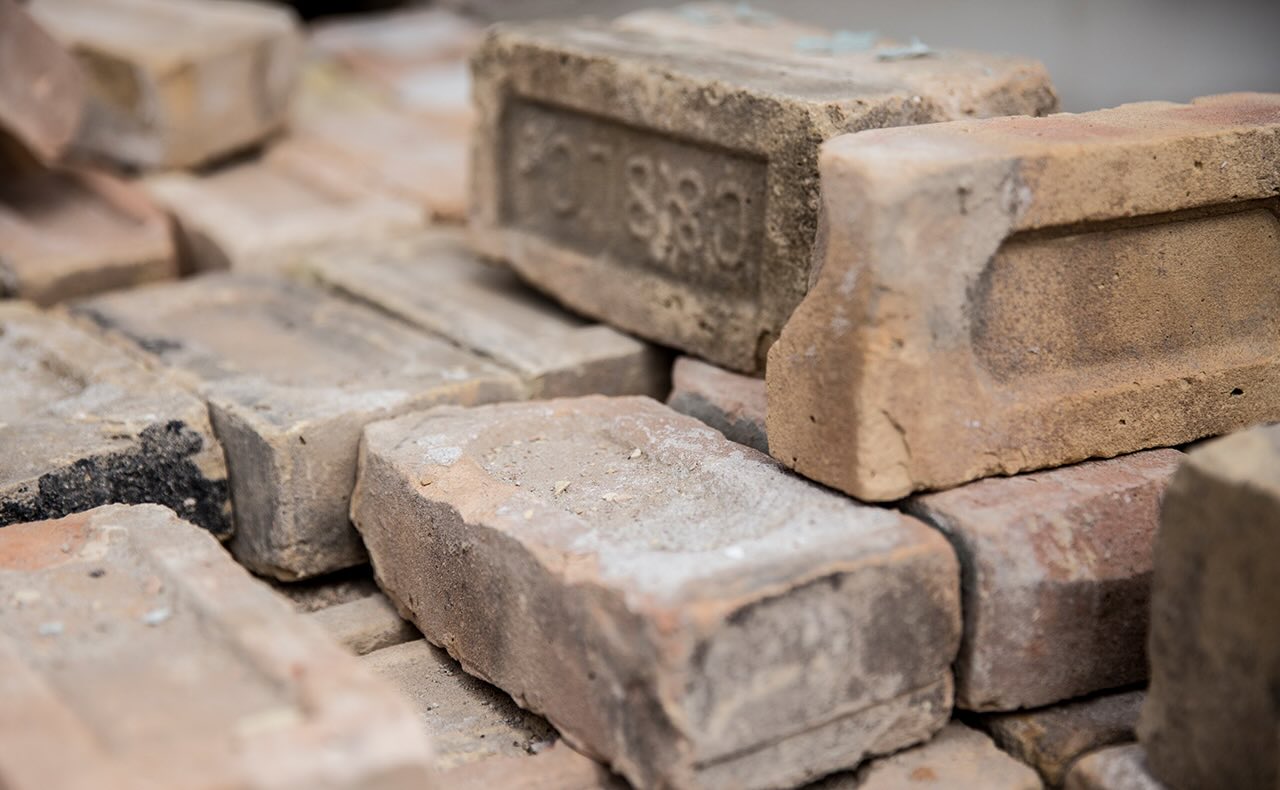Home>Articles>What Is The Most Common Hazard Associated With Ladder Use?


Articles
What Is The Most Common Hazard Associated With Ladder Use?
Modified: October 31, 2024
Learn about the most common hazard associated with ladder use and stay safe. Discover articles with essential tips for ladder safety.
(Many of the links in this article redirect to a specific reviewed product. Your purchase of these products through affiliate links helps to generate commission for Storables.com, at no extra cost. Learn more)
Introduction
Introduction
Using a ladder may seem like a straightforward task, but it can actually be quite hazardous if not done properly. Ladder accidents can occur in various settings, including construction sites, warehouses, offices, and even homes. These accidents can result in serious injuries or even fatalities. Therefore, it is crucial to understand the potential hazards associated with ladder use and take necessary precautions to ensure safety.
In this article, we will explore the most common hazard associated with ladder use and discuss the factors that contribute to ladder accidents. We will also delve into the importance of ladder safety training and the need for personal protective equipment. Finally, we will provide some prevention tips and safety measures to minimize ladder accidents and promote a safe working environment.
By the end of this article, you will have a comprehensive understanding of ladder hazards and be equipped with the knowledge to prevent accidents and protect yourself and others while using a ladder.
Definition of ladder hazards
Key Takeaways:
- Falls from heights are the most common and dangerous hazard associated with ladder use, highlighting the importance of stable placement, proper training, and personal protective equipment to prevent accidents and injuries.
- Understanding and addressing ladder hazards, implementing safety measures, and promoting a culture of awareness and prevention are essential for creating a safer working environment and reducing the risk of ladder accidents.
Definition of ladder hazards
Ladder hazards refer to the potential dangers and risks that arise from the use of ladders. These hazards can result in accidents and injuries if proper precautions are not taken. It is essential to identify and understand these hazards to effectively mitigate the risks associated with ladder use.
Some common ladder hazards include:
- Instability: Ladders can be unstable if not placed on a firm and level surface. Uneven ground or slippery surfaces can cause the ladder to wobble or shift, increasing the risk of falls.
- Overreaching: Stretching too far while on a ladder can cause it to become unbalanced and lead to a fall.
- Incorrect ladder selection: Using an improper ladder for a specific task can increase the likelihood of accidents. Ladders come in different types, sizes, and weight capacities, and choosing the right one is crucial to maintain stability and safety.
- Poor ladder condition: Damaged or worn-out ladders can be hazardous. Broken rungs, missing bolts, or faulty hinges can compromise the structural integrity of the ladder and increase the risk of accidents.
- Inadequate training: Lack of knowledge and training on ladder safety techniques can lead to improper ladder usage, increasing the chances of falls and other accidents.
These hazards can affect anyone who uses a ladder, whether it’s in a professional or personal setting. Understanding these risks is essential for taking proactive measures to ensure safe ladder use and minimize the potential for accidents and injuries.
Statistics on ladder accidents
Statistics on ladder accidents
Ladder accidents are more common than you might think. According to the Occupational Safety and Health Administration (OSHA), falls from ladders account for a significant number of workplace injuries and fatalities each year. Here are some eye-opening statistics on ladder accidents:
- In the United States, falls from ladders are the second leading cause of work-related fatalities, accounting for nearly 20% of all workplace fall deaths.
- Approximately 24,000 ladder-related injuries are reported annually.
- Over 300 deaths occur each year in the U.S. due to falls from ladders.
- Most ladder accidents occur in the construction industry, followed by industries such as manufacturing, warehousing, and maintenance.
- Statistics show that the majority of ladder accidents involve falls from heights of less than 10 feet, highlighting the importance of taking precautions even for shorter tasks.
- Common injuries resulting from ladder accidents include fractures, sprains, strains, head injuries, and dislocations.
- The cost of ladder-related injuries and deaths is estimated to be around $24 billion annually, considering medical expenses, lost earnings, and other related costs.
These statistics demonstrate the severity and frequency of ladder accidents. It is evident that ladder safety should be a top priority in various industries and settings. By being aware of these statistics, employers and individuals can take proactive steps to prevent ladder accidents and promote a safe working environment.
Causes of ladder accidents
Causes of ladder accidents
Ladder accidents can happen due to a combination of factors, ranging from human error to external conditions. Understanding the causes of ladder accidents is key to preventing them. Here are some common causes:
- Lack of ladder inspections: Failure to perform regular inspections of ladders can lead to the use of damaged or faulty equipment, increasing the risk of accidents.
- Incorrect ladder placement: Placing a ladder on an unstable or uneven surface can result in the ladder tipping over or shifting, causing falls or injuries.
- Inappropriate ladder use: Using a ladder for a task it was not designed for, such as using a stepladder as an extension ladder, can compromise stability and pose serious risks.
- Overreaching or excessive leaning: Leaning too far to the side, or overreaching while on a ladder, can throw off balance and lead to falls or ladder collapse.
- Improper ladder setup: Failing to fully open or lock ladder hinges, not securing ladder stabilizers or safety devices, or using a ladder with missing rungs can all contribute to accidents.
- Insufficient training: Inadequate knowledge of ladder safety procedures, including climbing and descending techniques, can increase the likelihood of accidents.
- External factors: Adverse weather conditions, such as rain, snow, or strong winds, can make ladder surfaces slippery or affect ladder stability, raising the risk of accidents.
- Misjudgment of ladder weight capacity: Overloading a ladder beyond its weight capacity can cause it to buckle or collapse, leading to falls and injuries.
It is important to address these causes by implementing preventative measures and promoting a safety-conscious culture in the workplace. Regular safety training, proper ladder inspections, and ensuring adherence to recommended ladder usage guidelines can greatly reduce the risk of ladder accidents.
Most common hazard associated with ladder use
Most common hazard associated with ladder use
While ladder accidents can be caused by various factors, one hazard stands out as the most common and potentially dangerous – falls from heights. The primary risk associated with ladder use is the possibility of losing balance or stability and falling to the ground or a lower level. Falls can result in severe injuries, including broken bones, head trauma, spinal cord damage, and even death.
There are several reasons why falls are the most prevalent hazard when it comes to ladder use:
- Unstable ladder placement: If a ladder is not positioned on a stable and level surface, it becomes more prone to wobbling or slipping, increasing the risk of falls.
- Overreaching or improper ladder use: Stretching or leaning too far while on a ladder can cause it to become unbalanced, leading to falls. Additionally, using a ladder in a way that it is not intended for, such as standing on the top step of a stepladder, can result in loss of stability and accidents.
- User error or lack of training: Individuals who are not adequately trained in ladder safety techniques may make mistakes while climbing or descending, increasing the likelihood of falls. Lack of awareness regarding proper ladder usage and precautions can have serious consequences.
- Inadequate ladder maintenance: Using damaged or worn-out ladders can compromise stability and structural integrity, making them more susceptible to collapse or failure during use.
- Environmental factors: External conditions, such as wet or slippery surfaces, strong winds, or poor lighting, can affect ladder stability and contribute to falls.
To mitigate the risk of falls, it is crucial to prioritize ladder safety. This includes selecting the appropriate ladder for the task at hand, ensuring proper ladder setup and stability, and using personal protective equipment. It is also essential to provide comprehensive ladder safety training to all individuals who may use ladders in their work or daily activities.
By addressing the most common hazard associated with ladder use – falls from heights – and taking proactive measures to prevent them, we can significantly reduce the number of ladder accidents and promote a safer working environment for everyone.
Factors contributing to ladder accidents
Always inspect the ladder for any damage or defects before use. Ensure it is placed on a stable surface and never overreach while on the ladder. Use the 4-to-1 rule for proper angle placement.
Factors contributing to ladder accidents
Ladder accidents can occur due to a combination of factors, often stemming from a lack of awareness, improper practices, and external conditions. Understanding these contributing factors is crucial for implementing preventative measures and promoting ladder safety. Here are some common factors that contribute to ladder accidents:
- Lack of proper training: Insufficient knowledge of ladder safety and proper usage techniques is a significant contributing factor to ladder accidents. Without adequate training, individuals may not be aware of potential hazards and the correct methods to prevent accidents.
- Poor ladder maintenance: Neglecting to properly maintain ladders can increase the risk of accidents. Damaged or worn-out ladders with broken rungs, loose hinges, or missing bolts can compromise stability and collapse during use.
- Inadequate ladder selection: Choosing the wrong type of ladder for a specific task can lead to accidents. Each ladder type has its own weight capacity, height limitations, and intended use. Failing to select the appropriate ladder for a job can result in instability and falls.
- Lack of stability: Unstable ladder placement is a common factor in ladder accidents. Placing a ladder on an uneven or slippery surface can cause it to wobble or shift, increasing the risk of falls.
- Overreaching and improper use: Overreaching or standing on the top rung or step of a ladder can throw off balance and lead to falls. Similarly, using a ladder in a manner it was not designed for, such as leaning it against an unstable object or not securing it properly, can contribute to accidents.
- External conditions: Environmental factors like inclement weather, poor lighting, or obstacles in the workspace can affect ladder stability and contribute to accidents. Wet or slippery surfaces, for example, increase the risk of falls.
By understanding and addressing these contributing factors, steps can be taken to reduce ladder accidents. This includes implementing comprehensive ladder safety training programs, conducting regular ladder inspections and maintenance, promoting proper ladder selection, and providing a safe work environment free from potential hazards.
Remember, ladder accidents are preventable. By identifying and addressing the factors that contribute to accidents, we can significantly reduce the number of injuries and create a safer working environment for all.
The importance of ladder safety training
Importance of ladder safety training
Ladder safety training is crucial for individuals who use ladders in their work or daily activities. It provides essential knowledge and skills to prevent accidents, promote safe practices, and protect workers from potential hazards. Here are some reasons why ladder safety training is of utmost importance:
- Prevention of accidents: Ladder safety training equips individuals with the necessary knowledge and techniques to identify and mitigate potential ladder hazards. It teaches them how to properly set up and use ladders, making them less susceptible to falls, collapses, or other accidents.
- Awareness of risks: Training raises awareness about the risks associated with ladder use. It educates individuals about the common causes of ladder accidents, such as unstable placement or overreaching, and helps them recognize and address these risks proactively.
- Compliance with regulations: In many workplaces, ladder safety training is a legal requirement mandated by regulatory bodies such as OSHA. By providing training, employers ensure compliance with safety regulations, reducing the risk of penalties and legal liabilities.
- Promotion of a safety culture: Ladder safety training fosters a culture of safety within an organization or community. When individuals are trained and equipped with the knowledge to identify and address ladder hazards, it creates a collective responsibility towards safety and encourages others to prioritize safe practices.
- Proper ladder selection and maintenance: Training not only covers ladder usage but also emphasizes the selection and maintenance of ladders. Individuals learn how to choose the right ladder for a given task, consider weight capacity, and inspect ladders for damage or wear. This helps ensure the use of safe and reliable equipment.
- Emergency preparedness: Ladder safety training includes information on emergency procedures in case of accidents. Individuals are taught how to respond quickly and effectively to ladder-related incidents, minimizing injuries and providing timely medical assistance if required.
Ladder safety training should be comprehensive and tailored to specific work environments and tasks. It should cover aspects such as ladder setup, climbing and descending techniques, weight limitations, proper body positioning, and the use of personal protective equipment.
By investing in ladder safety training, employers can protect their employees, improve workplace safety, reduce the likelihood of accidents, and create a culture of safety awareness. Individuals who receive ladder safety training are equipped to make informed decisions and take necessary precautions, reducing the risk of injuries and promoting a safe working environment.
Personal protective equipment for ladder use
Personal protective equipment for ladder use
When working with ladders, it is crucial to prioritize safety by utilizing personal protective equipment (PPE). PPE is designed to minimize the risk of injuries and provide additional protection while performing tasks that involve ladder use. Here are some essential types of PPE specifically recommended for ladder use:
- Non-slip footwear: Wearing sturdy, non-slip footwear with good traction is vital to prevent slips and falls while climbing ladders. Slip-resistant shoes or boots help maintain stability and grip on ladder rungs or steps.
- Head protection: Hard hats or safety helmets protect the head from falling objects or potential head injuries in case of a fall from a ladder. Hard hats should be worn when working at heights or in environments where overhead hazards are present.
- Eye protection: Safety goggles or glasses should be worn to shield the eyes from dust, debris, or particles that may be dislodged during ladder work. They provide protection against eye injuries and ensure clear visibility while working at heights.
- Hand protection: Gloves with proper grip and dexterity can enhance hand protection and prevent slips or injuries while handling ladders. They provide a secure grip and protect hands from cuts, abrasions, or hazardous materials.
- High-visibility clothing: Wearing high-visibility vests or clothing makes individuals more easily visible to others, especially in high-traffic areas or low-light conditions. This helps prevent accidents and ensures that ladder users are easily spotted by fellow workers or passing vehicles.
- Fall protection harness: In certain situations, such as working on elevated platforms or roofs, fall protection harnesses are essential. They provide a means to arrest a fall and prevent serious injuries. It is important to receive proper training on the use of fall protection equipment to ensure correct usage and proper adjustment.
Remember, the specific PPE requirements for ladder use may vary based on the nature of the task, industry regulations, and company policies. It is essential to assess the risks associated with ladder work and provide the appropriate PPE accordingly.
Moreover, it is important to ensure that the provided PPE is in good condition, fits properly, and is worn consistently during ladder-related activities. Regular inspections and maintenance of PPE are necessary to ensure their effectiveness in protecting individuals from potential hazards.
By incorporating the use of personal protective equipment into ladder safety practices, employers can prioritize the well-being of their employees and create a safer working environment.
Prevention and safety measures for ladder accidents
Prevention and safety measures for ladder accidents
Preventing ladder accidents requires a comprehensive approach that addresses various aspects of ladder use and safety. By implementing the following prevention and safety measures, individuals can significantly reduce the risk of ladder-related accidents:
- Proper ladder selection: Select the appropriate ladder for the task at hand. Consider factors such as ladder type, height, weight capacity, and material. Using the right ladder ensures stability and minimizes the risk of accidents.
- Inspect ladders regularly: Before each use, inspect the ladder for any signs of damage or wear. Check for missing rungs, loose hinges, and cracks. Do not use a ladder that is damaged; repair or replace it.
- Ensure stable ladder placement: Place the ladder on a firm, level surface. If working on uneven or soft ground, use ladder levelers or a sturdy base to provide stability. Always secure the ladder to prevent slips or shifting.
- Set up the ladder properly: Follow the manufacturer’s instructions for ladder setup. Fully extend extendable ladders, lock hinges, and engage all safety mechanisms. Maintain a proper ladder angle – for every four feet of vertical height, move the base of the ladder one foot away from the wall or surface.
- Use three points of contact: Maintain three points of contact with the ladder at all times – either two hands and one foot or two feet and one hand. Keep both feet centered on the rungs and avoid leaning or reaching too far.
- Avoid overreaching: Reaching too far while on a ladder can cause loss of balance and falls. Keep your body centered between the side rails and reposition the ladder when needed instead of stretching.
- Use proper climbing and descending techniques: Face the ladder when climbing up or down, maintain a firm grip on the ladder, and descend facing the ladder. Do not skip rungs or steps, as this can disrupt balance.
- Minimize distractions: Concentrate on the task at hand and avoid distractions while on a ladder. Do not carry heavy or bulky objects that may affect balance and stability.
- Provide adequate lighting: Ensure proper illumination in areas where ladders are used, especially in dimly lit environments. Good visibility reduces the risk of tripping or missteps.
- Receive ladder safety training: Educate individuals on ladder safety and proper usage through comprehensive training programs. Training should cover ladder selection, setup, climbing techniques, and the importance of PPE.
By following these prevention and safety measures, individuals can significantly reduce the risk of ladder accidents. It is crucial to create a safety-conscious culture, where everyone is aware of ladder hazards and actively takes steps to prevent accidents.
Remember, ladder safety is a shared responsibility. Employers, supervisors, and individuals must work together to implement these measures and promote a safe working environment for everyone.
Conclusion
Conclusion
Ladders are common tools used in various industries and settings, but they can pose significant hazards if not used correctly. Understanding and addressing ladder hazards is crucial for preventing accidents, injuries, and even fatalities. By implementing proper safety measures and adhering to recommended practices, individuals can minimize the risk of ladder accidents and create a safer working environment.
Throughout this article, we explored the most common hazard associated with ladder use – falls from heights – and identified contributing factors such as unstable ladder placement, improper use, and lack of training. We also discussed the importance of ladder safety training and the use of personal protective equipment (PPE) to mitigate risks.
To prevent ladder accidents, individuals should prioritize ladder safety by following key prevention measures. These include proper ladder selection, regular ladder inspections, stable ladder placement, correct ladder setup, using three points of contact, avoiding overreaching, and receiving comprehensive ladder safety training.
Creating a culture of safety and awareness is essential. Employers and supervisors should prioritize ladder safety by providing appropriate training, ensuring proper maintenance of ladders, and promoting adherence to safety protocols. It is also crucial to encourage open communication about ladder hazards and to provide resources for reporting any ladder-related concerns or near misses.
Remember, ladder accidents are preventable. By understanding the risks associated with ladder use, staying informed about ladder safety best practices, and implementing the necessary safety measures, we can protect ourselves and others from ladder accidents and create a safer working environment.
Let us prioritize ladder safety, and together, we can significantly reduce the occurrence of ladder accidents and foster a culture of safety and well-being.
Frequently Asked Questions about What Is The Most Common Hazard Associated With Ladder Use?
Was this page helpful?
At Storables.com, we guarantee accurate and reliable information. Our content, validated by Expert Board Contributors, is crafted following stringent Editorial Policies. We're committed to providing you with well-researched, expert-backed insights for all your informational needs.














0 thoughts on “What Is The Most Common Hazard Associated With Ladder Use?”